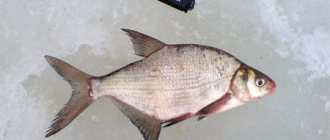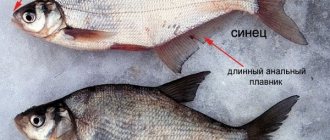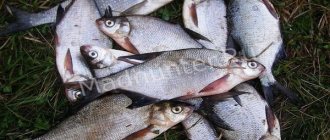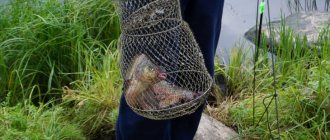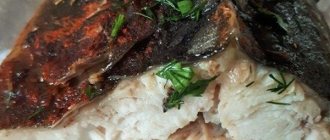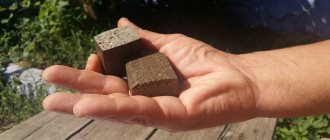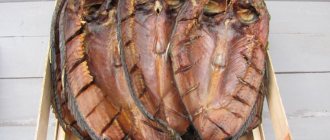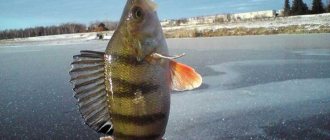The carp family has dozens of representatives that are widely distributed throughout Russia. Many members of the family are commercial fish and objects of recreational and sport fishing.
A special place in the family is occupied by bream - the only fish in the genus Abramis brama. Its young specimen is called the bream. The bream is a conspicuous fish, having a certain body structure that is not characteristic of all cyprinids. Body flattened laterally. Because of this feature, in the fishing community the fish was called “plywood”. The scoundrel is a very cautious fish, it is also called “scoundrel fish.”
This representative of the river fauna is extremely popular in the fishing community. It is valued for the taste of its meat and its character, which makes fishing interesting. In order for the catch of fish to be successful, the angler needs to know the characteristics of this fish, its character and habits, which change with the seasons.
The white bream is similar to many representatives of a huge family, but it is most similar to its ancestor bream and white bream.
What is the difference between bream and white bream?
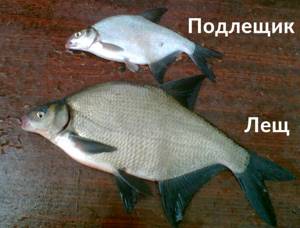
Many inexperienced fishermen are sure that bream and white bream are different species. They are very similar, but have a number of differences that will disappear over time. After all, a bream is a young individual of bream up to 3 years old. White bream form the largest population of bream. The weight of the bream varies from 300 to 700 grams. Bream are much larger than their descendants.
However, the main difference between the bream and the bream is the color of the scales. The bream has silvery scales. In an adult, the scales have a brown, bronze, reddish and golden tint. If the catch contains a fish weighing 1 kilogram, but with silvery scales, it is a bream, and if the scales have already acquired a brown tint, then it is already an adult bream. In addition, the young fish does not have a hump, which it will acquire during its life. The bream got its name because it is, under the guise of bream, a young specimen of this bottom-dwelling fish.
Is a bream a small bream or not?
Most experienced fishermen do not understand the difference between bream and bream, and are not aware of the existence of such a species. In science, there is no official name “scavenger”; the name was invented by fishermen. To formulate the term in simple words, a bream is a small bream, but its habits and principles are significantly different from its older brother. For a detailed description of the fact that bream and bream are different fish, you should look at them separately.

Part of the cyprinid subspecies, it stands out due to its size. Length up to 50 cm, weight depends on conditions and place of residence. Maximum weight 6 kg. Known for its external structure of an oval-appressed shape. The color is iridescent, one side is silver, the other is dark gray or black. The head shape is elongated and large in size. The oral cavity is relatively small compared to the background of the head.
The shape of the fin vaguely resembles a helicopter blade. It is curved to the side, and the motor apparatus is located near the caudal region. There is often a hump on the back of the bream, up to 5 cm in size.
In nature there are:
- Semi-passable. The main feature is migration. Begins one day before the breeding season.
- Residential. The habitat is static. Lives at a constant depth.
Important! The main feature that gives the fish away is that it avoids swimming alone, only in a school.
Habitat: deep waters without noise and thickets. It spends most of its life near the sand, so as not to run into danger and hide in the sandy bottom in time. Activity begins with the onset of sunlight, without sound hazards. Relocation is not a distinctive feature of this species.

There are natural circumstances - before the onset of cold weather, the fish migrates to warmer waters, survives the winter and goes in search of a place to spawn. Reproduction occurs in temperatures from 13 to 20 degrees Celsius, is accompanied by noise and is difficult to see with the naked eye.
Likes to eat algae and vegetation near the coastline. A special delicacy is shellfish. The semi-anadromous one goes hungry during reproduction; the feeding process begins after 15 days. The resident will die without food, so he must eat heavily.
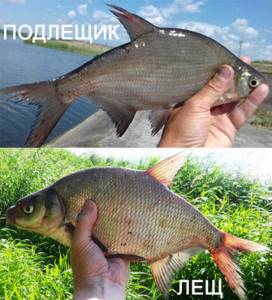
Differences between silver bream and white bream
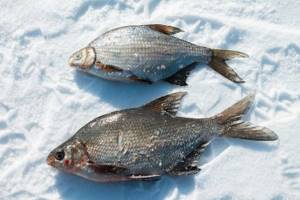
If white bream and bream can be distinguished by the color of their scales, then it is much more difficult to find the differences between white bream and silver bream. Gustera is a unique representative of its family and forms the genus Blicca. This fish is very similar to a young bream, and the task of distinguishing them is overwhelming for inexperienced fishermen.
The first obvious difference between the two fish is the color of the pectoral and ventral fins. In the silver bream they are reddish-pink, while in the white bream they are solid gray. The bright fin of the silver bream makes it too noticeable for a predator. She is a tasty prey for pike and pike perch. That is why, living next to a predator, the fish learned to become almost invisible. Its red fin may change color to grey. Then, the resemblance to young bream becomes phenomenal.
However, there are differences that can be seen by the experienced eye of an angler. The scales of the bream are much larger than those of the silver bream, and the body is flatter and laterally compressed. The eyes of a young bream are much smaller than those of its opponent. The silver bream has two rows of teeth, while the white bream has one row. Experienced fishermen know these distinctive features and will identify their catch in a matter of minutes.
Description of the species
Despite the uniqueness of the genus, there are different species groups of fish, which are determined by their prevalence and habitat. The most famous include common, Danube, eastern and Volga bream. All of them have a strongly laterally compressed rounded body, which is characterized by an abnormal height of 1/3 of the length of the body. The main differences are color and size.
The standard is officially considered to be the large common bream, which is characterized by:
- sides of brown, brown or golden shades;
- fins are gray with a dark border;
- yellowish belly;
- a compact head with large eyes and a small retractable mouth-tube for sucking in small-sized plant food, which clearly answers the question of whether the bream is a predator or not.
- scaleless keel between ventral and anal fins.
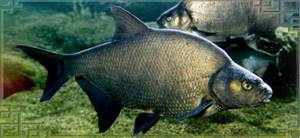
Juveniles can differ significantly in color from larger bream and are often completely silver in color. The short and high dorsal fin is noticeably displaced towards the tail and has three hard and about ten soft rays. The long anal fin also has several spines and a large number of less rigid rays (22-29 pieces).
To learn more:
Halibut: types of fish, differences and lifestyle features
The average weight of fish varies between 1.5-3 kg. More massive individuals with a length of 30-45 cm are considered trophy. The maximum weight is 6-7 kg. But there are exceptions.
Officially, the largest bream in the world has broken the 11.5 kg mark. This giant was caught in the Finnish Lake Vesijärvi back in 1912.
If you do not take into account official statistics and refer to the records of domestic zoologists, you can find out that the largest bream caught in Russia weighed more than 16 kg. The reservoirs of the Vitebsk province (Pskov and Smolensk regions) were once famous for such giants.
White bream fish
The largest population of bream is represented by immature young animals up to three years old and weighing 300-700 g, which are distributed in all reservoirs of Russia, with the exception of rivers with too fast a flow or a rocky bottom. Historical confusion has led to the fact that the fish, which is similar to bream and is in fact one, received its own name - bream.
Many inexperienced fishermen are sure that bream and bream are different species, and try to find differences between them, which, of course, exist, but disappear with age. In addition to their smaller size and weight, the difference between the white bream and the bream is visible in the elongated body and silvery-white color of the former. A more difficult task is to find the differences between young bream and silver bream. This is another unique representative of the cyprinid family from the class of ray-finned fish, which alone forms the monotypic genus Blicca.
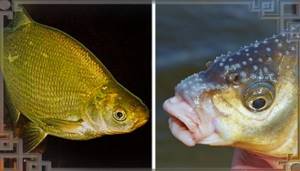
Gustera: similarities and differences from young bream
Fishing for bream on lakes and rivers in many parts of Russia often gives quite interesting results. The cage may contain identical fish in appearance with minimal differences in color. Some have pectoral and pelvic fins with a red or pink base and a gray tip, while others have a solid dark gray color, sometimes with a black border. It is the reddish-pinkish fins that are the first clue to the question of how to distinguish a silver bream from a bream.
To learn more:
Ide: description of fish, habitat and lifestyle
The silver bream is not a large fish; it rarely grows to weigh more than 600-800 grams and remains a desirable trophy for pike, pike perch, and large perch all its life. That is why in reservoirs with an abundance of predators it has to become as invisible as possible, which leads to the disappearance of the red tint of the fins. And then the external resemblance to young bream becomes phenomenal.

White bream at spawning
But regardless of the habitat, the physiological differences between the silver bream and the white bream, originally laid down by nature, are always preserved:
- a flatter and laterally compressed body, which gave rise to the appearance of local names for the fish: flatfish, plywood, flatfish;
- proportionally larger eye size in relation to the size of the head;
- equal length of both tail fin feathers;
- larger scales.
The last sign is the main one and allows you to accurately distinguish between the silver bream and the white bream. In young bream, the number of rows of scales from the lateral line to the first ray of the dorsal fin is 14 or more. The silver bream has 10-12 rows. Just a little time and fishing experience is enough for this difference to be quickly determined by eye.
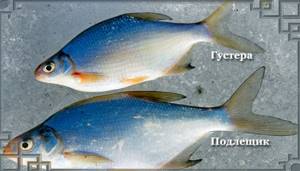
Habitats of the bream
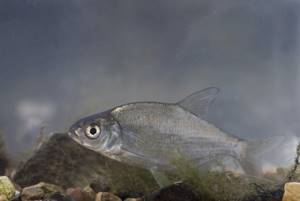
Naturally, the habitats of the bream are located where its older brother, the bream, is found. Ubiquitous in water bodies of Central and Eastern Europe. Feels great in the basins of the Caspian, Azov, Baltic, Black and North seas. The population in Russia is very widely represented. It was introduced artificially to the region of Western Siberia. There are a lot of bream in the basins of the Yenisei, Irtysh, and Ob. The fish reproduce very quickly. In addition, bream and bream adapt to environmental conditions. It is found in the rivers of the Urals, on the border with Kazakhstan and Uzbekistan. Widely distributed in the Republic of Kazakhstan, on Lake Balkhash and the Ili River, Syrdarya.
Gustera is a close relative of bream
White bream is a fish belonging to the carp family. It reaches a length of about 35 centimeters, and its weight can reach up to 1.3 kilograms, but most often representatives of the species weigh 100-200 grams. This fish leads a schooling lifestyle.
The silver bream is closely related to bream. She has the same laterally compressed body and silvery color as a young bream.
The difference between these fish is only in the location and number of pharyngeal teeth. The silver bream has not 5, but 7 teeth on each side, and they are arranged in two rows.
The habitat of the silver bream is the basins of the Black, Baltic and Caspian seas. It has a flattened body, and its height is equal to a third of the total length. Her eyes are large, silver in color, and her muzzle is blunt. The color of the back is bluish-gray, and the sides are silver-blue. The paired fins are red at the base, dark gray at the tip, and the paired fins are gray throughout. But the color of the silver bream can vary significantly depending on the season, habitat and age of the fish.
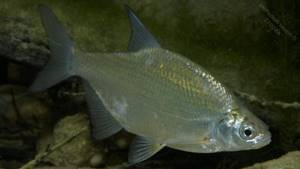
Guster (Blicca bjoerkna).
White bream is not a large fish. Basically, the body length does not exceed 30 centimeters, and the weight is 400 grams; individuals weighing 600-800 grams are less common, and only in exceptional places, for example, in Lake Ladoga do 1.2-kilogram silver bream live.
White breams are much more common in comparison with eye breams, raw breams and blue breams. The silver bream lives in almost all European countries: England, Norway, France, Sweden, Switzerland and Germany. It is not found only in Southern Europe. In the above countries, it is considered an ordinary fish.
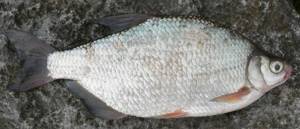
White breams inhabit the basins of the Black, Baltic and Caspian seas.
In our country, silver bream is found in rivers, lakes of the northwestern provinces and even in ponds. In Finland, these fish live up to 62 degrees north latitude. Also, this fish is not rare in Lake Onega. In northern Russia, its habitat reaches Arkhangelsk. In Pechora, most likely, the silver bream disappeared, but it was recently discovered in Siberia - in the Iset River. In Transcaucasia, she lives near the Black Sea coast - at the mouth of the Kura.
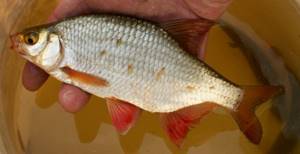
White bream is not a large fish.
White bream has a lazy character, so it prefers, like bream, quiet, deep reservoirs with fairly warm water. The bottom should be clay or silt. The fish stays in one place for a long time, but prefers to stay close to the shore. In shallow water it feeds on larvae and a variety of worms. In small quantities, silver bream lives in river mouths, for example, on the Volga or in the Gulf of Finland.
In autumn and spring, these fish gather in numerous schools, which is why the name “breeze bream” came about. Representatives of the species do not like long journeys; they rarely rise above the middle reaches of the Volga. Gustura gathers en masse near the sea, in the lower reaches of rivers. Like many other species of fish, the silver bream rises upstream in the spring to spawn, and in the fall for wintering. For the winter, they hide in holes, and in such huge numbers that sometimes it is possible to catch about 30 thousand at a time.
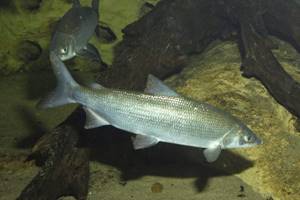
The silver bream lives in small quantities in river mouths.
The diet of white bream is similar to that of other species of bream. It feeds on mud and living creatures found in the mud: worms, crustaceans, small mollusks, bloodworms. In addition, the silver bream loves the caviar of other fish, giving the greatest preference to the caviar of the rudd.
The silver bream spawns late, this happens after the mating season of bream ends - in May-June. In the south, they spawn a little earlier. During this period, the color of the scales of the silver bream noticeably changes, and the paired fins become much redder. In addition, in males, small granular tubercles form along the edges of the scales, which disappear again after the end of spawning.
As a rule, small individuals spawn earlier, and then larger ones begin to spawn. Fishermen in the Gulf of Finland believe that two species of silver bream live there: they call one breed Troitskaya (the name comes from the time of spawning), this breed is smaller and lighter in color, and its spawning takes place earlier. Another breed is called Ivanovo, it is much larger than the first (can weigh about 1.2 kilograms), has a darker color and spawns later.
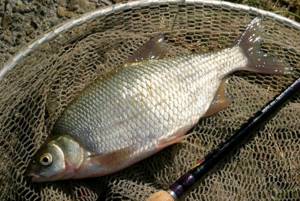
Freshly caught silver bream.
The silver bream spawns in shallow bays with a lot of vegetation. The spawning process is noisy, like that of a bream. But the silver bream has a calmer character than the bream; sometimes you can even catch it with your hands. Spawning begins at sunset and continues until ten in the morning. A medium-sized female brings up to 100 thousand eggs. It is believed that the silver bream becomes sexually mature very early - when it reaches a length of 13 centimeters, so it probably begins to spawn in the 2nd year of life.
If you find an error, please select a piece of text and press Ctrl+Enter.
Lifestyle of a bream
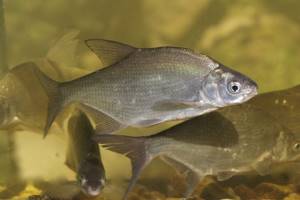
The bream is a fish that leads a bottom lifestyle. Lives in packs. The white bream lives in rivers with weak currents. It needs standing, warm water, with a muddy bottom, holes, snags, and creeks. Shallow rivers with fast currents and cold water are not inhabited by bream. Large schools of fish gather in dams, since there the water warms up as much as possible and a lot of branches gather. Loves silted bottom overgrown with algae and grass. Fish can also be found in lakes.
With the onset of cold weather and the approach of winter, flocks of bream become larger. They descend into the deepest places of reservoirs, looking for depressions that will serve as wintering pits. In these pits, schools of fish are in a state of stasis.
With the arrival of spring, the water begins to warm up, and the bream emerges from its winter shelter. This fish, leading a sedentary lifestyle, does not change its inhabited territories.
The main condition for its life, in addition to warm, stagnant, calm water, is an abundance of food. The white bream is an omnivorous fish, consuming both animal and plant foods. Its diet depends on its habitat. Since the bream is a bottom-dwelling fish, its menu is appropriate. The structure of its mouth is designed in such a way that it collects food from the bottom with elongated lips. The fish cannot grab large food, again due to elongated lips.
The plant diet consumed by the bream consists of: algae seeds and their shoots, plant particles. Stretching out its lips, the bream seems to be vacuuming the bottom, looking for food among the silt and sand.
The fish also likes to indulge in animal food, including: insect larvae, crustaceans and mollusks, bloodworms, caviar of pike, perch and carp.
Fish breams are harmless, leading a peaceful lifestyle. However, a representative of this species has many enemies. Predatory fish are not averse to feasting on juvenile bream, because it is easier to catch them than adult, neat fish. Hunting bream is not difficult. All you have to do is break into the school, grab the fish, stunning its fellow fish, and then eat them too.
The second danger for the bream is humans. A large population of fish, tasty meat - this makes bream and bream desirable prey for anglers.
Habits and nutrition
The habits of bream are quite conservative and predictable. Being a schooling fish, it prefers a sedentary lifestyle in rivers, reservoirs and lakes with weak currents and well-warmed water. At the same time, this species can successfully acclimatize in cold water bodies and slightly saline bays. Bream living in the sea are forced to lead a semi-anadromous lifestyle and rise up rivers to spawn and feed.
When examining in detail the question of what small and large bream eat, you can immediately notice a special love for cereals, small crustaceans, mollusks and various boneless organisms: worms, larvae, insects, etc. There are also cases when an adult grabs a fry. The fish spends most of its time at the bottom, choosing deep and silty places.
During sunny periods it rises closer to the surface to bask, but at the slightest noise or threat it immediately goes deeper. It is her timidity and caution that are the main factor complicating fishing.
In autumn, the habits of bream change. Due to the short length of the day and lower water temperatures, it switches from morning and evening feeding to constant feeding in order to quickly accumulate a sufficient supply of fat for the winter. In October, the habits of bream once again undergo dramatic changes - the fish gather in large schools and little by little go to the depths for wintering, but at the same time retain their appetite. This explains the possibility of successful winter fishing for both white bream and large bream.
To learn more:
What is bleak and where does it live?
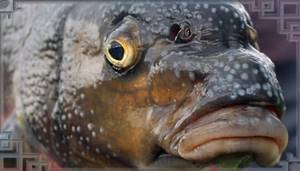
Methods for catching bream

An adult specimen of the carp family is of commercial importance and is caught everywhere. The white bream is not caught on an industrial scale, since its size does not correspond to the permitted size. Recreational fishing for this species is permitted, but the size of the “plywood” must correspond to the minimum size allowed for catch. In different regions it ranges from 10 to 32 centimeters.
However, if an angler aims to catch a bream, then for successful fishing it is necessary to know the characteristics of the fish. This fish is also called the “scoundrel” and this is due to its cunning, timidity and caution.
You can catch white bream using a float rod, feeder or donka. The best baits: worms, maggots, bloodworms, bread. The white bream and its older brother peck on raw lard. The best time for fishing is morning and evening.
The bream's bite is accurate; it will not grab the bait. When you see the float leaving smoothly, you need to wait intently. The bream tries the bait. Having tasted it, he will begin to eat it, and the jerks will be more active. At this moment you should hook the fish.
If fishing occurs in the winter season, then you should fish in pits with jigs. The main requirement is thin tackle. The thinner the line, the greater the chance of success. The main rule when hunting for bream is maintaining silence. You should not make noise both on the ice and on the shore in the spring. You should drill 3-5 pairs of holes, feed them and sprinkle them with snow.
Be sure to feed bream and bream. Since this fish is very neat and cautious, it will not immediately respond to bait. It will take time. It is better to use aromatic bait, based on barley, pearl barley or corn. Animal supplements of chopped worms and maggots are guaranteed to bring the bream to feed.
The most effective way is to catch bream using several fishing rods with different jigs. One should play and the other should catch. The game should be smooth, without sudden movements.
The same baits that are used as bait should be used on the hook. It should be noted that a particularly catchy bait is the so-called sandwich, when bloodworms and maggots alternate on the hook.
Since bream and bream are desirable fish for fishermen, water farms are engaged in breeding and preserving the population of this species. In the last century, commercial catch of this fish reached 120 thousand tons. These days the numbers have decreased by 3-4 times. People monitor the reservoirs where the bream lives, and in cases of threat to the population, special seines and artificial floating spawning grounds are installed. In addition, a ban on catching fish below a certain size also helps preserve the population of this fish.
External differences between silver bream and bream
Two species of fish belong to the Cyprinidae family. An adult silver bream is similar to a young bream in color, body shape, and habitat. The height of their bodies is one third of their length. The color of their bodies, flattened laterally, is usually silver-gray. The silver bream has scales with a blue tint. During breeding, white spots appear on the surface of the carcass of males, and the fins of females turn pinkish or scarlet.
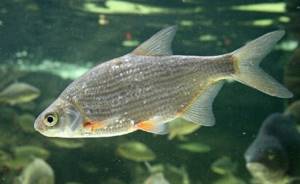
The silver bream rarely reaches its maximum weight; the average size is about half a kilogram. It is slightly thinner and more bony compared to the bream, which is comparable in length.
Length 35 cm and weight 1.3 kg for silver bream are maximum. Bream reaches similar parameters at a young age. The length of the largest specimen is 82 cm and weighs 6 kg. The bream is a young and small individual. The color of a bream's scales is affected by its age and habitat. The body of a sexually mature individual is painted golden.
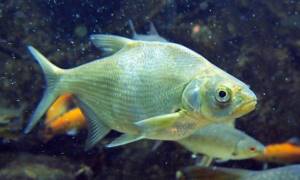
The average weight of bream in reservoirs is 1–2 kg. Sometimes it is possible to catch specimens weighing 3–4 kg. A fish with a pointed head is distinguished by its gaze, which is directed towards the bottom. The diameter of the eye is usually smaller compared to the length of the nose. The mouth opening is converted into a tube as needed. The bream is distinguished by an elongated anal fin originating on the back.
The differences between the fish are shown in the table:
- along the side contour
- across the body.
- 51-57
- 12-18
- 44-50
- 13
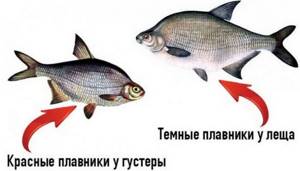
Gastronomic value of bream
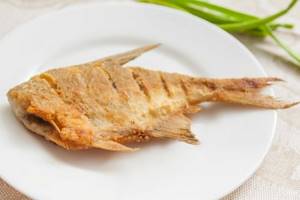
Despite the abundance of bones, the meat of the bream is highly valued in cooking. It is very tender, tasty, full of healthy ingredients and vitamins: C, P, B, D.
The gastronomic value of bream lies in the fact that its meat is saturated with micro and macroelements: iodine, calcium, potassium, magnesium. Regular consumption of this fish has a positive effect on the human body and the functioning of its organs. There are a huge variety of recipes for preparing white bream. The meat is delicious in any form: fried, dried, smoked or dried.
River fish is prized among both experienced fishermen and beginners. Healthy, tasty meat, an interesting process of catching - all this makes the fish a desirable catch in the fishing world. Having studied the behavioral characteristics of the fish, its taste preferences and character, you can go to the reservoir in search of a young bream.
Bream: structure, features and habitats
Bream belongs to the carp family and is large in size.
The size of this fish can reach half a meter, and its weight varies from 4 to 6 kilograms. The shape of the bream is associated with a flattened plate. The color is also unique: one side of the carcass is painted silver, while the other has a darker shade. His mouth is small, despite the fact that his head is large. The fin, located in the tail region, looks like blades that are bent inward. A hump was noticed on the dorsal part.
There are two types of bream:
- semi-anadromous, the peculiarity of which is that it migrates before the cold season and departure for spawning;
- residential, which is characterized by constant presence in the waters of the same body of water at depth.
The most characteristic feature of bream is the constant urge to be with its school.
Preferred habitats: silent, remote areas in the waters of lakes and rivers. Bream avoids swampy places, mud and thickets. He spends the vast majority of his time at depth, so that in a dangerous situation he has the opportunity to protect himself by burying himself in the sand. It comes into the light only during a lull - at sunrise. Migration is not typical for this type of fish, but exceptions occur, for example, before winter, together with its school, it migrates to warmer waters, where it spends the winter, and then goes to spawn in places where there is rich vegetation. It lays eggs at a temperature of about 13-20 degrees. This process is quite noisy, which is very difficult not to notice.
Bream likes to eat algae, as well as vegetation in places close to the shore, mixing with shellfish. If we touch on nutrition, the semi-anadromous starves during spawning and begins to eat vegetation only after two weeks. The resident, in turn, consumes food no less actively at this important time for him.
White bream: features of structure, habitat and method of fishing
The bream belongs to the same order and family as its older brother. But its dimensions are different: the carcass reaches about 16-22 cm, weight 0.6 or 3 kilograms. Its mouth resembles a tube that it can extend, its body is associated with the same shape of a flattened plate, and its scales are painted silver. Another difference: the bream does not have a hump, and the proportional ratio of the bream to the bream is 1:3.
Every fisherman has a number of ways to catch bream in his arsenal:
- On a fishing rod with a float. You need to throw it from the shore, the length should reach 7-9 meters. If the water is not very deep, then you can use a “lentil” as a jig. Suitable baits: maggots or worms dug out of manure in advance.
- Fishing on a feeder. Here the length should reach a little more than two m, the dough should be 80 g. The distance from the shore is 1.5 meters.
- Spinning fishing. It is preferable to use moving spoons and dough up to 50 grams. It will be convenient to use a spinning rod in fast currents.

